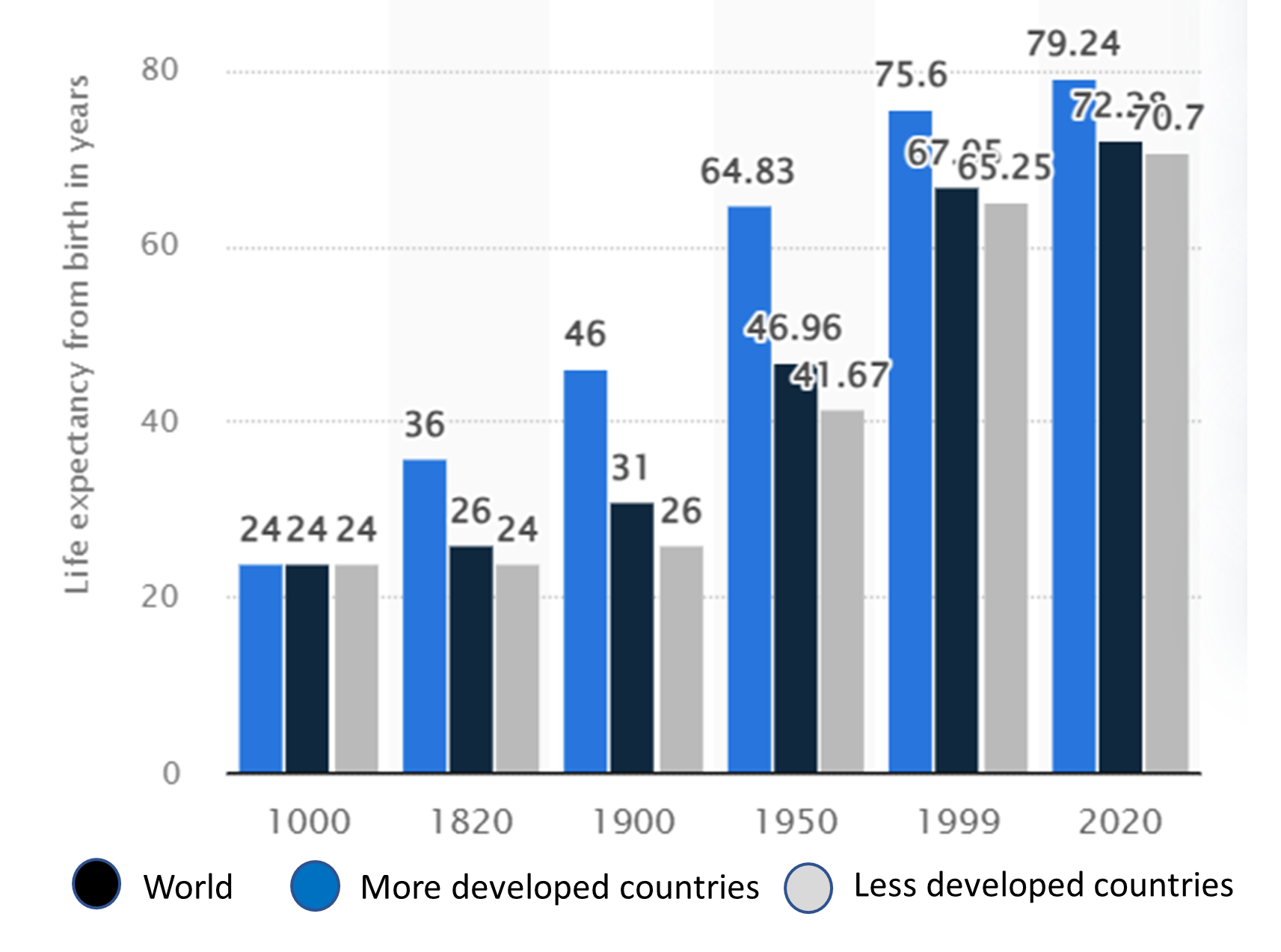Throughout most of history, average life expectancy from birth was fairly consistent around the world, at about 24 years. This was largely due to high infant and child mortality rates. Those who survived into adulthood could expect to live into their 50s or 60s, but pandemics, food insecurity, and conflict caused periodic spikes in mortality across the population. Gradually, from the 16th to the 19th centuries, there was some growth in more developed societies. Population growth results from an increase in fertility and/or a decrease in mortality. In the 1800s, infant mortality fell sharply, while fertility declined after 1820. The determinants of these phenomena are seen as the result of improvements in agriculture, infrastructure and medical knowledge, the latter coming, more recently, with the introduction of vaccination.

Semi-empirical studies argue that improved nutrition was the main contributor to the decline in mortality. The resulting increase in life expectancy was due to improved nutrition, which resulted from the significant increase in calorie and nutrient availability from the introduction of potatoes from the New World to the Old World. The breakthrough brought about by introducing the potato illustrates the complex evolutionary relationship between humans and plants. The small essay presents a modest view of how a resource such as starch has accompanied human evolution for more than 20,000 years. With an optimistic vision, starch can also contribute to making new products in an environmentally sustainable way, reducing our footprint while meeting future economic needs in the context of changing world temperatures and climate change.
